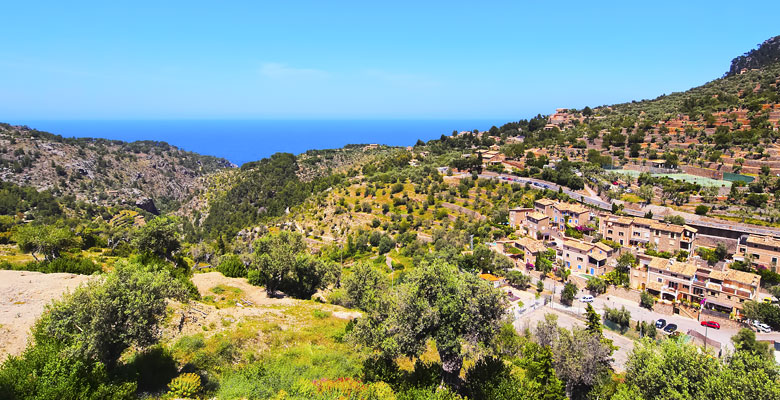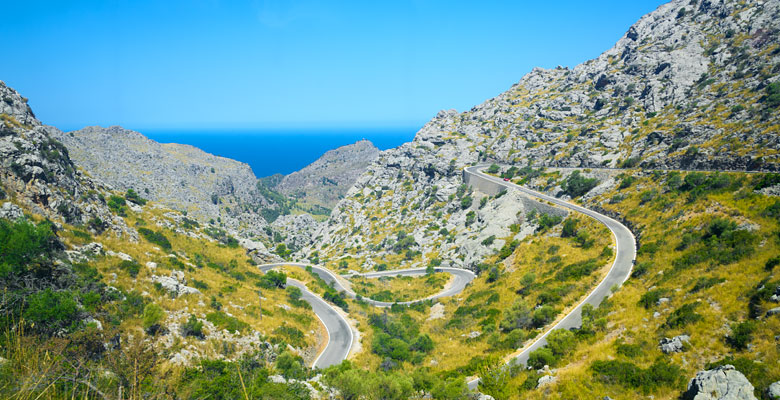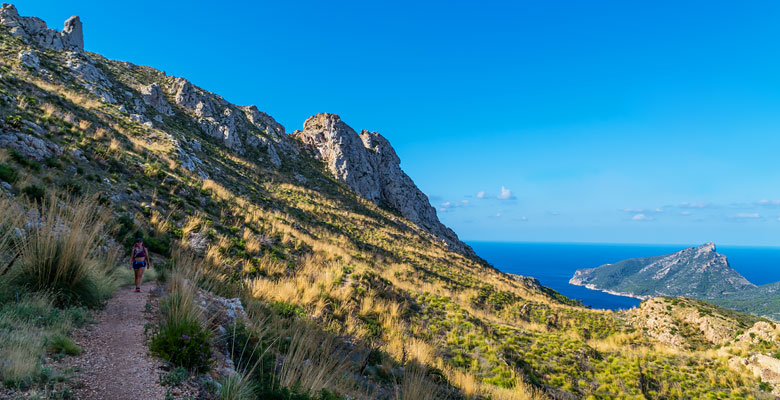Mallorca’s UNESCO mountains
- By Simpson Travel
- 21 Jun 2017
- What to do
If we told you Mallorca had a site on the UNESCO World Heritage list, you might assume we were talking about Palma cathedral, the Moorish bath-house or the labyrinthine streets of the Old Town. In fact, this prestigious protected status has been awarded to the Serra de Tramuntana, a 90km-long mountain range which forms the backbone of the island along its north west coast and covers 19 municipalities, including Fornalutx, Deià and Valldemossa.
The range is undoubtedly stunning, an imposing line of peaks that plunge straight into the sea on one side. However, it’s not the glorious natural landscapes that make these mountains so interesting from a cultural and historical point of view, rather it’s the way human beings have adapted the landscape.

When cultures collide
To put things into context, it's worth going back to the early history of the island. Arab invaders conquered Mallorca in 902, and ruled it for some 300 years before ceding possession to Jaume 1’s Christian army in 1229. The Arabs brought with them their knowledge of irrigation and water management systems, and as a result, this water-starved island was able to cultivate vegetables and fruit on previously barren slopes. Such terracing is common throughout the southern Mediterranean, but the system that has evolved here is uniquely complex, using a specialised arrangement of underground channels, canals, ditches and storage basins to harvest and transport water. Once the Christians came to power, they built on the Arab terracing and irrigation techniques, adding their own agricultural expertise and skills in dry stone construction. Dividing up Arab-held land between the conquering nobles, they also organised the parcels of terraced land into larger estates known as posesiones, which remain a dominant feature of the landscape today. It’s this subtle but significant converging of cultures that has given the Serra de Tramuntana UNESCO World Heritage Site status.

Reaping the benefits
If this all sounds a little, well, dry for the non-historian, then it might help to consider the benefits of UNESCO status for visitors to Mallorca. Above all, it means that wide areas of fragile and beautiful landscapes are both protected and more accessible. For example, the 167km-long GR 221 walking route snakes through the typical dry-stone landscapes of the Serra de Tramuntana, with opportunities to visit historical remains, learn about myths and traditions and sample the best of the local gastronomy. Natural features such as Sa Dragonera island and the Torrent de Pareis ravine have become natural parks and monuments. The landscapes around Fornalutx, Deià, Sóller and Valdemossa are covered in the protected terraces, dry-stone paths, shelters and farm buildings, giving a serene and timeless quality to the countryside, despite the discreet sprinkling of luxury villas tucked away in the villages and on the hillsides.

Helpful trails for visitors
The Serra de Tramuntana visitor service recommends three routes to explore its special landscapes: the GR221 walking trail, the highly scenic Sóller to Palma narrow-gauge railway and a literary trail from Valldemossa to Pollença which pays homage to writers such as Robert Graves, George Sand and Archduke Ludwig Salvator, who wrote extensively about Mallorca. Whichever path you chose, knowing the history that literally shaped this unique region undoubtedly adds an extra richness to the experience.








